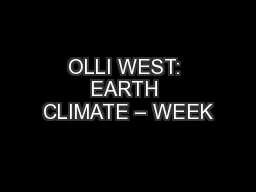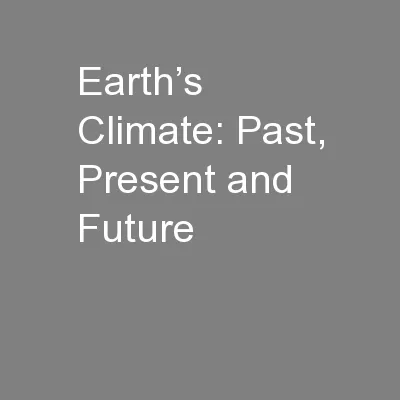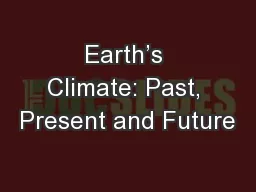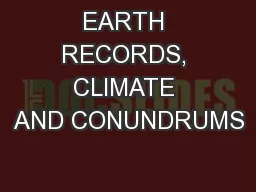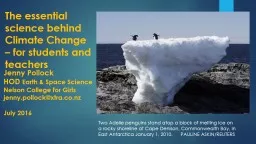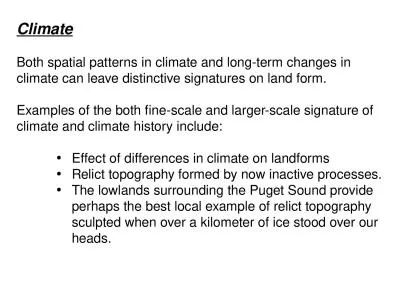PPT-OLLI WEST: EARTH CLIMATE – WEEK
Author : liane-varnes | Published Date : 2016-04-27
3 Data and proxy data Present signs of climate change Ocean acidification Tuesday September 29th 2015 Paul E Belanger PhD Data and proxy data Data Measurements
Presentation Embed Code
Download Presentation
Download Presentation The PPT/PDF document "OLLI WEST: EARTH CLIMATE – WEEK" is the property of its rightful owner. Permission is granted to download and print the materials on this website for personal, non-commercial use only, and to display it on your personal computer provided you do not modify the materials and that you retain all copyright notices contained in the materials. By downloading content from our website, you accept the terms of this agreement.
OLLI WEST: EARTH CLIMATE – WEEK: Transcript
Download Rules Of Document
"OLLI WEST: EARTH CLIMATE – WEEK"The content belongs to its owner. You may download and print it for personal use, without modification, and keep all copyright notices. By downloading, you agree to these terms.
Related Documents

